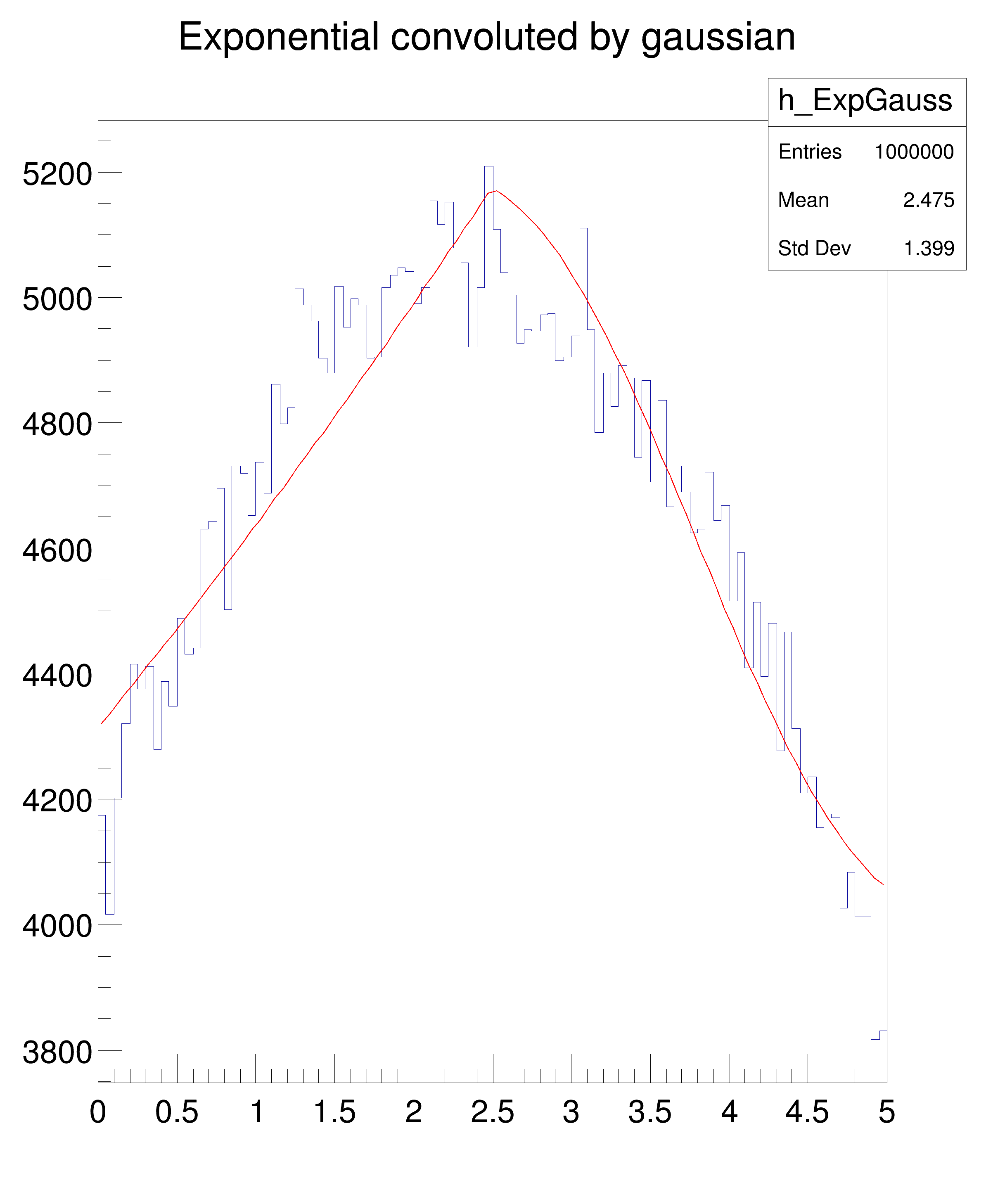
 Tutorial for convolution of two functions
Tutorial for convolution of two functions
FCN=298.12 FROM MIGRAD STATUS=CONVERGED 457 CALLS 458 TOTAL
EDM=1.08093e-08 STRATEGY= 1 ERROR MATRIX ACCURATE
EXT PARAMETER STEP FIRST
NO. NAME VALUE ERROR SIZE DERIVATIVE
1 p0 7.32859e+00 3.70795e-02 1.23437e-05 -3.46193e-02
2 p1 7.33040e-02 2.44083e-03 3.62176e-06 -7.16223e-02
3 p2 -2.26420e+00 4.91803e-02 5.24021e-05 -1.27917e-02
4 p3 1.12811e+00 6.28810e-02 1.94847e-05 -2.72591e-02
#include <stdio.h>
#include <iostream>
#include <math.h>
using namespace std;
void fitConvolution()
{
TH1F *h_ExpGauss =
new TH1F(
"h_ExpGauss",
"Exponential convoluted by gaussian",100,0.,5.);
for (int i=0;i<1e6;i++)
{
}
f->SetParameters(1.,-0.3,0.,1.);
h_ExpGauss -> Fit("f");
}
R__EXTERN TRandom * gRandom
Class wrapping convolution of two functions.
void SetRange(Double_t a, Double_t b)
Set the actual range used for the convolution.
void SetNofPointsFFT(Int_t n)
Set the number of points used for the FFT convolution.
1-D histogram with a float per channel (see TH1 documentation)}
virtual Int_t Fill(Double_t x)
Increment bin with abscissa X by 1.
virtual void Draw(Option_t *option="")
Draw this histogram with options.
virtual Double_t Gaus(Double_t mean=0, Double_t sigma=1)
Samples a random number from the standard Normal (Gaussian) Distribution with the given mean and sigm...
virtual Double_t Exp(Double_t tau)
Returns an exponential deviate.
- Author
- Aurelie Flandi
Definition in file fitConvolution.C.

 Tutorial for convolution of two functions
Tutorial for convolution of two functions 